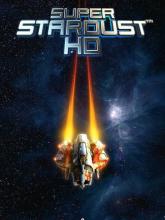Rating of
3/5
Too Old-School
Nelson Schneider - wrote on 07/15/11
“Super Stardust HD” (“SSDHD”) is a remake of “Super Stardust,” a completely unknown PC/Amiga SHMUP made in 1996 by Housemarque. “Super Stardust” is, itself, a sequel to “Stardust,” an even-lesser-known PC/Amiga/Atari SHMUP made in 1995 by Bloodhouse and released only in Europe.
With this legacy of obscurity, “SSDHD” would have been completely ignored by most gamers, even SHMUP fans, had it not been included as one of the freebie options in Sony’s “Welcome Back to PSN” promotion, in which gamers were given choices of games we already owned or obscure things we had never heard of and didn’t really want. Thus I came into contact with “SSDHD.”
Presentation
“SSDHD” looks pretty nice. The entire game is sculpted of polygons, most of which break down into progressively smaller pieces as gameplay progresses, eventually turning into the tiny motes of light that give the game its name. The art design isn’t particularly inspired, but at least it’s easy to tell enemies and asteroids apart from power-ups.
The music isn’t particularly pleasant and all of the tracks sound too much alike for my preference. The entire soundtrack consists of driving techno beats that, while not intrusive or distracting, just aren’t enjoyable.
The sound effects are likewise grating, but not distracting. Most item pick-ups are accompanied by a distorted female voice narrating what just happened.
Story
The worst part about “SSDHD” is that there is no narrative, nor even a simple premise. The player is simply dropped into the game with a brief splash screen explaining the gameplay rules. There is no explanation for why the player is controlling a tiny ship orbiting a planet. There is no explanation for why the planet is being bombarded by rock, gold, and ice asteroids. There is no explanation for why a variety of robotic enemies appear out of nowhere to make things even more difficult. There isn’t even an ending sequence for beating the game!
Gameplay
“SSDHD” is a twin-stick SHMUP, which means the left analog stick controls movement of the ship while the right analog stick controls the ship’s weapons-fire. I like this control setup quite a bit for SHMUPs, as it allows the player to take-out asteroids and enemies without sitting right in front of them. The other controls for the game include screen-clearing bombs that can be triggered by hitting R2, temporary-invincibility-inducing boosts that can be triggered by hitting L2, and weapon switching with the R1/L1 buttons.
The core gameplay involves the ship’s three weapons and the three types of asteroid. The Rock Crusher ‘efficiently’ destroys rocks, the Gold Melter works on gold, and the Ice Splitter works on ice. ‘Efficiently’ destroying asteroids increases the active score multiplier for the sake of achieving high scores, but otherwise does nothing useful. Breaking asteroids releases green cores, which, when destroyed, drop a power-up, ranging from simple points to weapon upgrades to shields (which allow the ship to take an additional hit). Sadly, the Gold Melter weapon is the only one that’s really worth using, as it spews forth a whip of fire that can be wrapped around the ship by rapidly twirling the right stick. The other two weapons only fire shots in one direction at a time. Despite their wide spreads at higher power levels, they still can’t touch the overwhelming versatility of the Gold Melter. Other than the uselessness of 2/3 of the game’s arsenal, my only real beef with the gameplay is the fact that power-up tokens appear completely at random. The appearance of a shield token is a happy and miraculous occasion such as finding the face of Jesus Christ on one’s morning toast. Naturally, the generosity of the game’s random token generator greatly influences how well the player will do (and thus their high score) on any given run through the game.
All of this asteroid and enemy destruction takes place on spherical 2D background. The planet the player’s ship is orbiting is a 3D sphere, but the player’s perspective is that of a traditional top-down SHMUP. Unlike many other SHMUPs, the levels don’t auto-scroll, thus allowing the player to move strategically around each planet to avoid the biggest clusters of shattered, ricocheting asteroid fragments.
The entire game is fairly short, consisting of 5 planets, each with 4 phases and a boss. Of course, being as old-school and obscure as it is, “SSDHD” starts the player with 3 extra lives and no continues. Upon losing their last life, the player is booted back to the title screen. Fortunately, there is a separate ‘Planet Mode’ that allows the player to play and clear each of the game’s levels one-at-a-time. The standard arcade mode is just an infinite loop where the same 5 levels keep repeating and become continually more difficult.
Overall
“Super Stardust HD” really lives up to its name as a remake: the only noticeable update to this archaic game, which was already old-school in 1996, is the addition of HD graphics. The lack of any engaging premise and heavy focus on ‘twitch’ gameplay and high scores hearkens back to an age before Nintendo when games just weren’t worth playing. While “SSDHD” isn’t ‘bad,’ there’s just nothing particularly engaging about it, and it certainly isn’t worth the $10 Sony is asking for it in the PSN store. This is the type of game I’d expect to see on a smartphone for 99 cents.
Presentation: 3.5/5
Story: n/a
Gameplay: 3/5
Overall (not an average): 3/5




